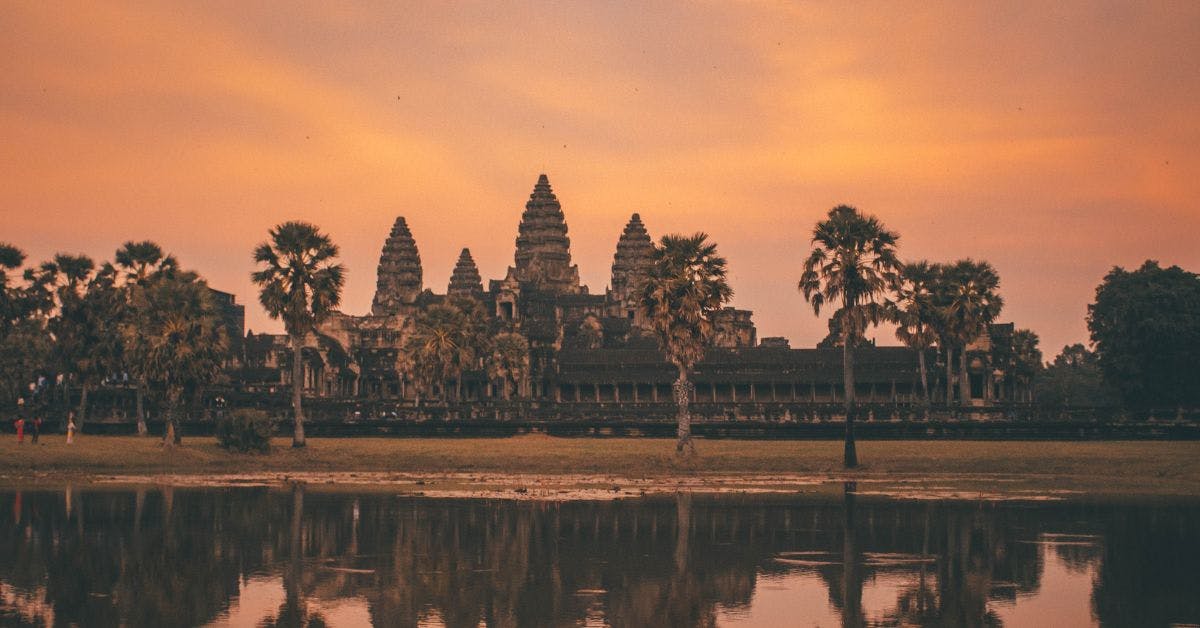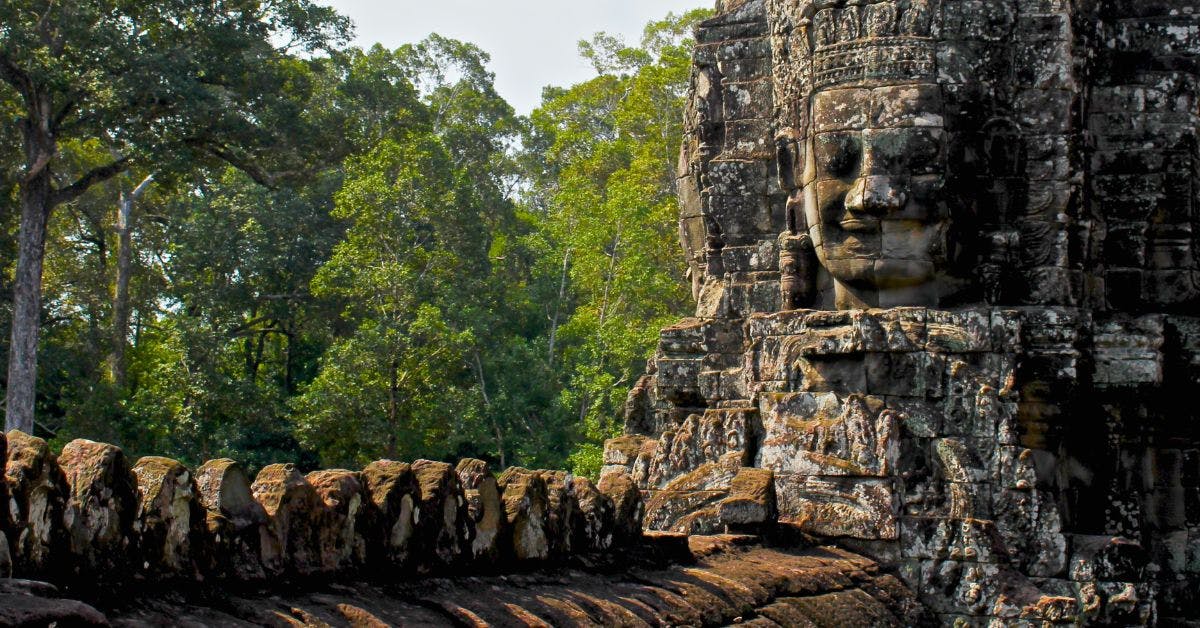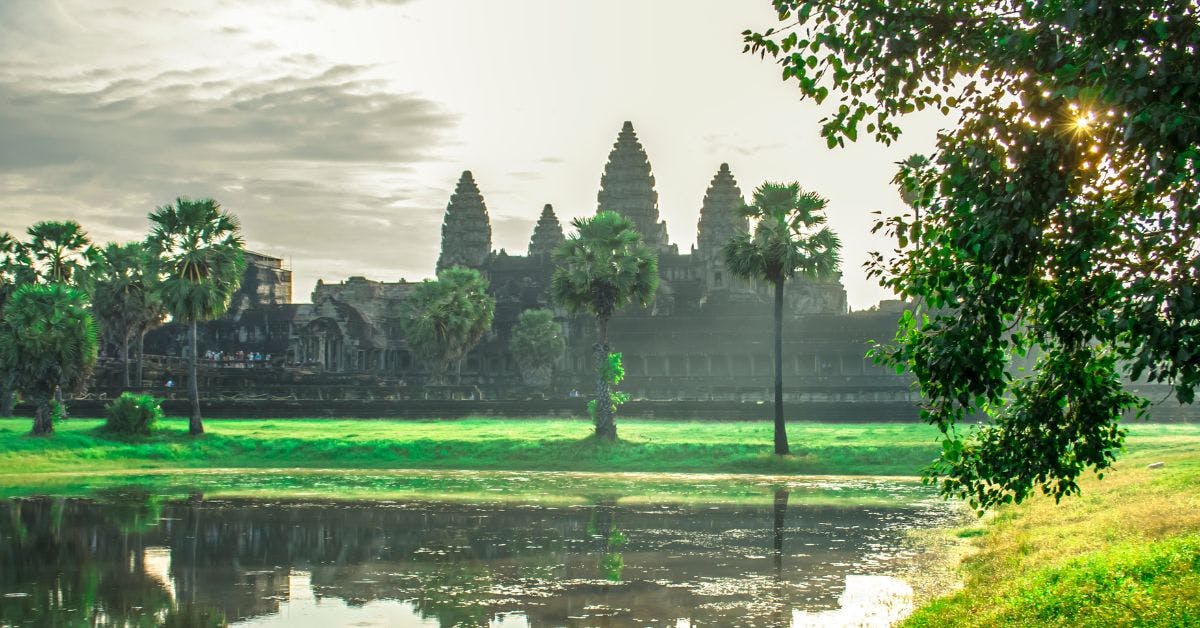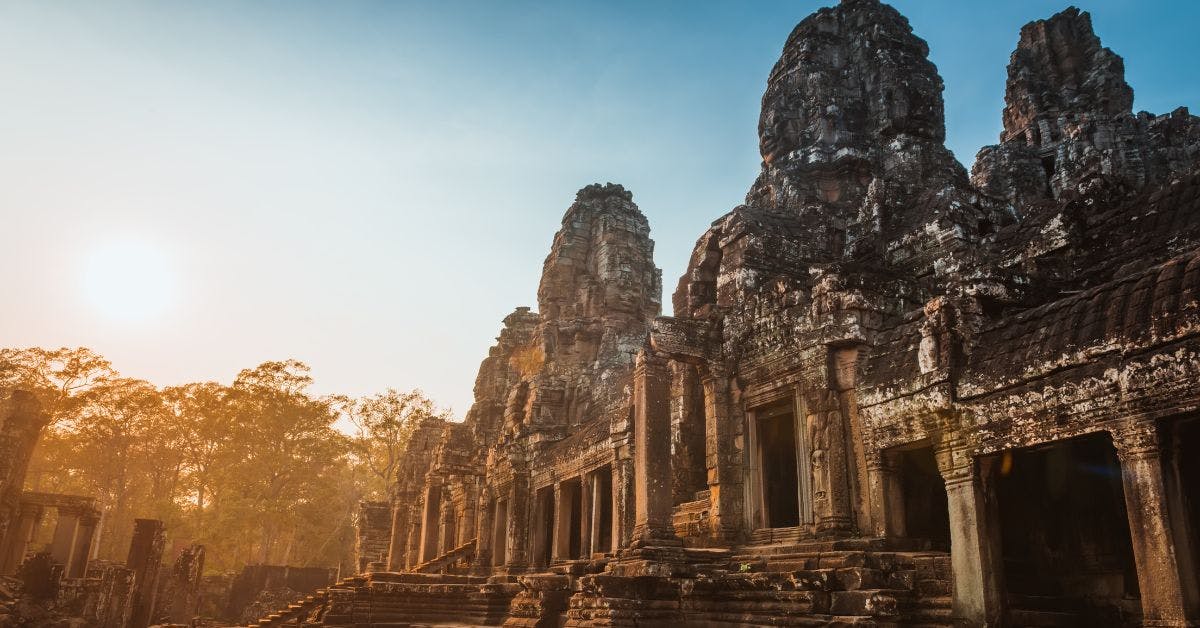Best Time to Visit Angkor Wat, Cambodia

Angkor Wat, Cambodia’s most iconic temple, stands as a magnificent testament to the grandeur of the Khmer Empire. A UNESCO World Heritage Site, it attracts travelers from around the world eager to witness its breathtaking sunrise, intricate carvings, and ancient history. Choosing the right season is crucial for an unforgettable experience. Cambodia has three distinct seasons: dry, wet, and hot, each offering unique advantages and challenges for visiting this architectural marvel.
If you’re dreaming of tropical shores, don’t miss the stunning Cambodian beaches on your budget trip.
Understanding the Climate at Angkor Wat
Angkor Wat, located in Siem Reap, experiences a tropical monsoon climate characterized by warm temperatures and seasonal variations in rainfall. The weather plays a crucial role in shaping the visitor experience, making it essential to plan accordingly.
Dry Season (November – April)
This is the most popular time to visit, with minimal rainfall and pleasant temperatures ranging from 25°C to 32°C. Clear skies provide stunning sunrise and sunset views over the temple complex, making it ideal for sightseeing and photography. However, peak tourist crowds mean higher accommodation prices and busier temple grounds.
Wet Season (May – October)
The monsoon brings frequent showers, usually in the afternoon, transforming the surrounding landscapes into lush, vibrant greenery. While humidity is higher and some temple pathways may be slippery, fewer tourists allow for a more peaceful experience. The iconic temple reflections in rain-fed pools create breathtaking photo opportunities.
Discover the best time to visit Cambodia to plan your travel!
Best Time to Visit Angkor Wat for Different Travel Experiences
Best Time to Visit Angkor Wat for Specific Activities
The ideal time to visit Angkor Wat depends on the activities you want to experience. Whether you're capturing stunning sunrises, exploring temple ruins, or immersing yourself in cultural festivals, timing plays a crucial role in enhancing your visit.
Best Time for Sunrise & Sunset Photography
- Best months: November to February, when the skies are clear and golden hues create breathtaking backdrops.
- Best time of day: Sunrise (around 5:30 AM) offers the most iconic view of Angkor Wat’s silhouette reflected in the temple’s pond.
- Pro tip: Arrive early to secure a prime viewing spot near the reflecting pool, as it gets crowded quickly.
Best Time for Exploring the Temples Comfortably
- November to February: Cool mornings and mild afternoons make walking through the vast temple complex enjoyable.
- March to May: The heat can be intense, so plan visits early in the morning or late in the afternoon to avoid peak temperatures.
- June to October: Cloud cover during the rainy season helps keep temperatures lower, making midday temple visits more bearable.
Best Time to Visit for Festivals & Cultural Experiences
- Khmer New Year (April): Celebrate Cambodia’s biggest festival with traditional games, performances, and water fights in Siem Reap.
- Bon Om Touk (November): Witness Cambodia’s spectacular Water Festival, featuring boat races and vibrant celebrations along the Tonlé Sap River.
As you understand the ideal time to visit Angkor Wat, get to know the details of Angkor Wat as well!
Best Days & Time of Day to Avoid Crowds at Angkor Wat
Angkor Wat is one of the most visited sites in Southeast Asia, attracting thousands of tourists daily. To experience its grandeur without the crowds, strategic timing and alternative temple visits can make a big difference.
Avoiding Peak Hours & Tourist Groups
- Busiest hours: 6:00 AM – 10:00 AM (sunrise and morning tours) & 3:00 PM – 5:00 PM (sunset visitors).
- Best time to explore: Late morning (10:30 AM – 12:30 PM) when most tourists take a break for lunch.
- Alternative strategy: Begin your day by visiting smaller temples like Ta Keo or Pre Rup, then explore Angkor Wat in the late afternoon when crowds thin out.
Exploring Lesser-Known Temples for a Crowd-Free Experience
- Bayon Temple: Famous for its massive stone faces of Buddha. Best visited early morning or late afternoon for a serene experience.
- Ta Prohm: Known as the "Tomb Raider" temple, it’s less crowded after 3:00 PM when most tour groups have left.
- Preah Khan: A vast, underrated temple with intricate carvings, best explored in the morning before the heat intensifies.
Also, explore some of the other best temples in Cambodia!
Best Time to Visit Siem Reap & Surrounding Attractions
Beyond Angkor Wat, Siem Reap offers vibrant night markets, cultural performances, and unique natural attractions. Timing your visit well ensures a more enjoyable experience.
Siem Reap Night Markets & Local Culture
- Best months for night market visits: November to February, when cooler evenings make strolling through markets comfortable.
- Top markets to explore: Angkor Night Market, Made in Cambodia Market, and Pub Street’s lively stalls.
- Traditional Apsara dance performances: Best enjoyed in the evening at cultural venues like the Angkor Village Theatre or local restaurants offering dinner shows.
Check out some of the other top tourist places in Cambodia!
Tonlé Sap Lake & Floating Villages
- Best time to visit: September to early November, when the lake is at its fullest, offering stunning views of floating villages and vibrant birdlife.
- Alternative visit: March or April presents a different experience as water levels recede, revealing stilted houses and daily life adapted to the dry season.
Rules for Visitors at Angkor Wat
- Wear modest clothing that covers shoulders and knees; revealing outfits are not allowed.
- Do not touch, climb, or sit on temple structures to prevent damage.
- Keep noise levels low and respect the spiritual atmosphere.
- Avoid littering; dispose of waste in designated bins.
- Smoking is strictly prohibited within the temple complex.
- Photography is allowed, but avoid using flash in restricted areas and ask permission before photographing monks or locals.
- Do not disturb religious practices, prayers, or meditation sessions.
- Follow designated paths and do not remove any artifacts or stones.
- Entry is only allowed with a valid Angkor Pass, which must be shown at checkpoints.
- Drones are not allowed without prior permission from the Apsara Authority.
- Be mindful of temple closing times and plan visits accordingly.
Plan smarter with visa fees included-check out the Cambodia visa for Indians before you book.
The best time to visit Angkor Wat depends on weather preferences, crowd levels, and personal travel goals. November to February offers the most comfortable weather but attracts the highest number of visitors. The hot season from March to May is suitable for budget travelers seeking fewer crowds, while the rainy season from June to October provides a peaceful experience with lush landscapes.
For photographers, early mornings are best for capturing the temple’s beauty, while cultural enthusiasts can plan their trip around major festivals. Regardless of when you visit, Angkor Wat remains a breathtaking destination. Plan your Angkor Wat trip with the Travelfika Cambodia Tour Package for a seamless travel experience.



